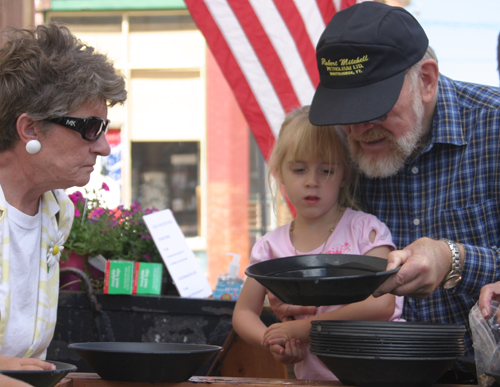 |

History is our life - we live and work in a century of gold mining - our homes and stores, our parks and roads are all part of an 1890's legacy that lives on in historic sites, museums and drives.
Escape from the "real" world and step back in time in historic Victor, Colorado.In Town Heritage Sites Victor is a National Historic District and the downtown is a museum all in itself - with brick structures built in 1899 after a fire destroyed the town. Several business and the local museum offers a chance to tour and experience an original 1899 store. One of the most noted stores in town, which offers homemade brooms and tin ware is the Victor Trading Company. The historic Victor Hotel offers respite in Victorian decor and still sports the original bird cage elevator.
The museum houses two floors of artifacts, books, exhibits and photographs depict the life in Victor from its earlier days to he heyday of gold mining. The gift shop offers books, historic maps and postcards, prints, posters and gold ore rocks, as well as videos of Lowell Thomas's life.
Gold Panning for real gold and gems
Modern Mine Tours
Gift Shop filled with Victorian jewelry, rare and new books, rocks, ornaments, postcards and t-shirts.
3rd & Victor Ave. 719-689-5009
Victor's Gold Camp Ag & Mining Museum

Victor's Gold Camp Ag & Mining Museum houses, displays and demonstrates one of North America's best known collections of historical tractors. This magnificent collection includes more than 40 tractors and hundreds of other vintage farm and mining implements, tools, and
power units that document our regional agricultural and mining history. The home for this collection is the historic Fillabaum Ford Dealership located at 102 Second Avenue, Victor, Colorado. Come see us and don't miss the Annual Tractor Pull during Gold Rush Days.2nd & Victor Ave/ 719-651-5569
Original 1890's mine owned by the Woods family, founders of Victor.
Teller County Rd 82 between Teller County Rd 81 and Highway 67.
Learn how it all started.
In 1891 Stratton staked claims to the Independence Mine - he later became a millionaire.
Sites In the Neighborhood Walk through the remnants of a gold processing mill; also visit the Stratton Outdoor Amphitheater.
Historic water tank converted to an outdoor theater for events.
Hiking and biking trails through 1890's mining country.
Historical Sites Within the Mining District The Butte Theater in Cripple Creek has been the home of the renewed tradition of Classic Cripple Creek Melodrama. Thin Air Theatre Company and the City of Cripple Creek presents year-round live entertainment at the theater.
Cripple Creek & Victor Narrow Gauge Railroad
A trip on the Cripple Creek & Victor Narrow Gauge Railroad, reveals scenic wonders around every curve as century-old steam locomotive transports you back to the gold mining days of Cripple Creek & Victor, Colorado. A treat for railroad and history buffs, kids and the whole family.The Pikes Peak Heritage Center at Cripple Creek will introduce visitors to the region’s fascinating history, recreation opportunities and cultural attractions. Bring the family and enjoy the fun to be had in the heart of history!
Located on Bennett Avenue in the former Midland-Terminal Railroad Depot, the Museum complex contains three buildings with six floors of mining memorabilia, maps, paintings, glass and china, children's items, furnishings, an assay office, a photograph gallery, Indian artifacts, mineral displays and two Victorian apartments.
Gold Belt Scenic and Historic Byway
Drive the Gold Belt Tour and retrace the historic travel routes connecting Cripple Creek and Victor Mining District, site of the world's largest gold rush, to the communities of Florence, Cañon City and Florissant. Today the communities of the Gold Belt Tour invite you to experience the rich local heritage as you follow the "Roads to Riches"...
After over fifty years of conducting public mine tours, this countries only 1,000 foot vertical shaft gold mine tour, just got bigger and better as an adventure never to be forgotten by visitors descending the earth downward 1,000 feet vertically to explore the underground mine workings of the 1890's hard rock gold miner.
Old Homestead House Museum
The Homestead House was once the most famous brothel in Cripple Creek. Owned and operated by Pearl DeVere, the opulent parlor bustled with activity and became known for its impeccable service, high-powered customers and its glamorous madams. At a time when $3 a day was considered a good wage for a miner, Pearl charged $250 a night, and got it. Today, the Homestead House is a museum that has been lovingly restored with velvet bedspreads and handmade furniture.
More Heritage Sites Beneath a grassy mountain valley in central Colorado lies one of the richest and most diverse fossil deposits in the world. Petrified redwood stumps up to 14 feet wide and thousands of detailed fossils of insects and plants reveal the story of a very different, prehistoric Colorado.
This is ZStudios website. Copyright 2012.
